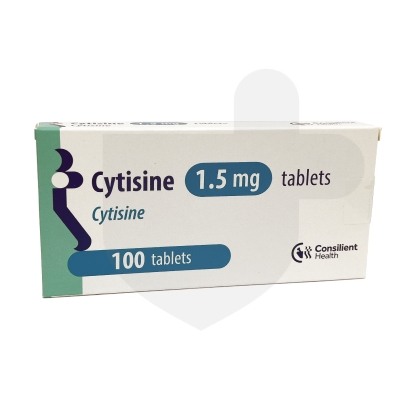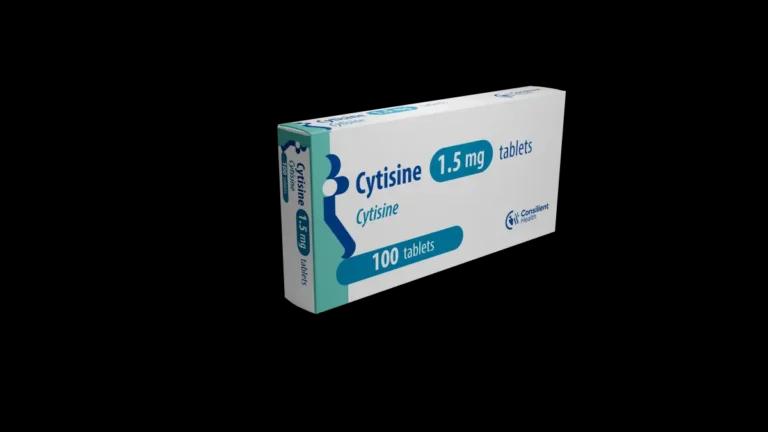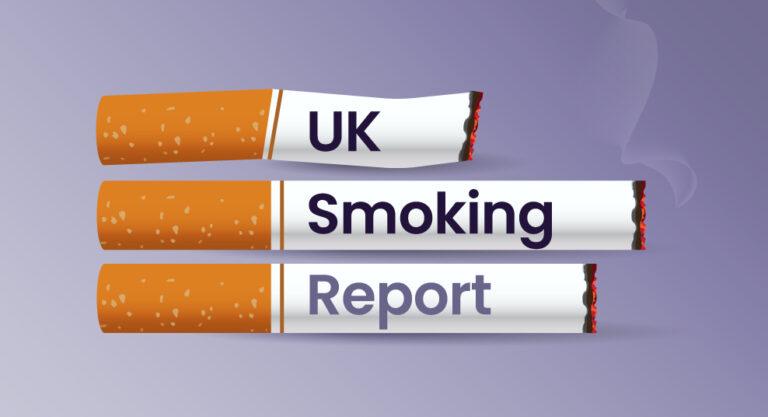Support and Treatment to Help You Quit Smoking
GET TREATED CONVENIENTLY
Available Treatments for Smoking Cessation
SAFE PRESCRIBING
Get Started With the Right Treatment for You
MEDICAL INFORMATION
Smoking Cessation Key Facts
Smoking is a major health problem impacting on other health conditions such as heart disease, lung cancer, and chronic obstructive pulmonary disease (COPD). According to NICE, there were 474,000 hospital admissions and 79,000 deaths caused by smoking, in 2015-16.
Here, we will take a closer look at the benefits of quitting smoking, effective strategies, local stop-smoking services, and insights into overcoming relapses.
Understanding the challenges of quitting
Those deciding to quit smoking often face challenges:
- Nicotine withdrawal symptoms such as irritability, anxiety, and difficulty concentrating
- Cravings and triggers, such as stress or mood swings
- Slips and relapses
Smoking Cessation strategies, such as quit-smoking medications, can help manage cravings and withdrawal symptoms and improve the chances of quitting.
Benefits of quitting smoking
- A decrease in blood pressure and the risk of heart attacks as well as cancer. Quitting smoking can increase life expectancy by as much as 10 years
- Average smokers save around £38 a week, which adds up to around £2,000 a year
- Improved physical and mental health, improved sense of taste and smell, easier breathing, increased energy levels, reduced anxiety, depression, and stress
- Harmful carbon monoxide levels in your blood will be reduced by half
- Health benefits extend to loved ones, reducing non-smokers exposure to secondhand smoke
Including interventions for tobacco use, changes in diet, and reducing alcohol intake can enhance benefits, further improving outcomes for ex-smokers.
Effective strategies for Smoking Cessation
- Finding personal motivations to quit smoking
- Preparing a quit plan with a quit date and exploring support options like quit-smoking classes, apps, counselling, and medications
- Removing all tobacco products from your home, as well as cleaning thoroughly to remove the smell of tobacco smoke
- Nicotine replacement therapy (NRT) such as nicotine gum, patches, lozenges, inhalers, electronic cigarettes (e-cigarettes) or vaping can help make quitting more bearable
- Prescription medications such as bupropion (Zyban), varenicline and cytisine
- Family, friends and colleagues can help support you with your quit attempt
- Regular exercise can help distract you from cravings and reduce withdrawal symptoms
- Eat well-balanced meals with plenty of fruits, vegetables, whole grains, and lean proteins
- Use delay tactics to distract yourself when you have cravings
- Use healthy substitutes such as carrots or nuts instead of reaching for a cigarette
- Resist the temptation to smoke ‘just one’ cigarette
- Try meditation, yoga, or listening to calming music to relieve stress
- Learn from past attempts to understand what worked and what didn’t
Use resources such as NHS Stop Smoking Services, or Smokefree Smartphone Apps to support your smoke-free life.
Support systems and resources
Resources and support systems include:
- Consulting with a GP, pharmacist, or health visitor in England, Scotland, or Wales
- Digital support tools are useful resources to track your progress and to receive daily support
- Community and online support that can be accessed via phone or video call. The NHS provides 28 days of email support, a Quit Smoking Support Group, and the National Smokefree Helpline
- The American Cancer Society and Smokefree.gov provide tools and guides
These support systems and resources can improve your chances of success in maintaining a smoke-free lifestyle.
Overcoming relapses
Relapses are a common problem when trying to quit smoking. Here are some tips on how to navigate relapses effectively:
- Understanding what led to the relapse. Did you have a stressful day at work, was it a social event with other smokers? Reflecting can provide a learning opportunity. Reflect on the cause and use it as an opportunity
- Identify and manage triggers:
- Practice deep breathing or mindfulness for stress or anxiety
- Change your routine or environment if you normally smoke after meals
- Avoid being around other smokers or prepare with NRT
- Use delay tactics like drinking water or a 10-minute walk if you have the urge to smoke
- Engage with support from family, friends, or support groups
Identify and avoid common triggers, and seek support to address relapses.
Conclusion
As you continue on your journey, it is important to remember that while the process might be challenging, the health benefits are worth it. If you need further support, try NHS Stop Smoking Services and Smokefree Smartphone Apps for additional guidance.
Frequently asked questions about Smoking Cessation
What are the essential steps in a Smoking Cessation intervention?
The essential steps are known as the “5 A’s”: Ask, Advise, Assess, Assist, and Arrange. This helps to identify smokers and provide appropriate interventions.
What does a Smoking Cessation service entail?
Smoking Cessation services provide ongoing behavioural support and the provision of Nicotine Replacement Therapy (NRT). These services are provided by pharmacists who have appropriate training in Smoking Cessation.
What are the 5 R’s related to Smoking Cessation?
The 5 R’s are motivational strategies designed to complement the 5 A’s. They include Relevance, Risk, Rewards, Repetition, and Roadblocks.
What is the most effective method to quit smoking permanently?
The most effective method to quit smoking involves a combination of quit-smoking products such as nicotine patches, lozenges, gum, inhalators, nasal sprays, and medication such as bupropion, as well as enrolling in support programs. Programs should be led by suitably trained professionals in treating tobacco dependence. Options include community stop-smoking groups or in-person or telephone consultations.
Medical Disclaimer
NowPatient has taken all reasonable steps to ensure that all material is factually accurate, complete, and current. However, the knowledge and experience of a qualified healthcare professional should always be sought after instead of using the information on this page. Before taking any drug, you should always speak to your doctor or another qualified healthcare provider.
The information provided here about medications is subject to change and is not meant to include all uses, precautions, warnings, directions, drug interactions, allergic reactions, or negative effects. The absence of warnings or other information for a particular medication does not imply that the medication or medication combination is appropriate for all patients or for all possible purposes.
Related Articles
Service Guide
Everything You Need to Know About Getting Treated Privately for Smoking Cessation
What does the Get Treated Privately service for Smoking Cessation do?
The Get Treated Privately service is a private prescribing service which is designed for adults aged 18 years and over, who are experiencing health issues and who would like to receive a fast-track assessment and if applicable, a treatment plan from a qualified prescribing clinician. Treatments for Smoking Cessation are dispensed and delivered to your home or workplace from our regulated online pharmacy.
Is this a safe Smoking Cessation prescribing service?
Yes. Our formulary of medications prescribed for Smoking Cessation are controlled, governed, and continuously risk-assessed by our Medical Director, Dr Ihtesham Sabri. Unlike other prescribing services which operate using faceless questionnaires, our Smoking Cessation prescribing service is conducted through remote video consultations, also known as synchronous consultations. This builds patient safety and prescribing appropriateness into our service, ensuring our prescribing clinicians can be satisfied with who and what they are treating. There is no guarantee of supply of medications, and any prescriptions supplied are at the sole discretion of our clinician prescriber. There is no charge for the Smoking Cessation consultation.
What is a prescribing clinician and is it safe for me to use them on the NowPatient platform?
Our prescribing clinicians are board-certified pharmacists, nurses, or doctors who can also prescribe any medicine for any medical condition, subject to accepted accreditation and good clinical practice. They are all registered with their respective regulatory bodies. For example, a pharmacist independent prescriber is registered with the General Pharmaceutical Council (GPhC). Each prescribing clinician undergoes an extensive background check including a disclosure and barring service check (DBS). In addition, they undergo a rigorous license verification process. When you book an appointment with our prescribing clinicians you will see their full name, license number, and any specialized credentials they have.
Is the service available worldwide?
Yes, you can get treated privately for Smoking Cessation worldwide.
Do I need to pay for this service?
Yes. This is a private service. You do not need to pay for the consultation. You only pay for the cost of the Smoking Cessation treatment that you are prescribed.
How do I book a consultation?
Once you have logged into your account, you will need to navigate to the Get Treated Privately service card which is located as a service item on the dashboard.
Using the action button on the service card, you can select one of the following – ‘Search Treatments’ or ‘Search Conditions’. From here you can search for Smoking Cessation.
Depending on the search type and the product/condition that you would like to get treated, you will be taken to a consultation booking screen. Follow the simple steps to complete your booking. During the booking confirmation, you will be able to select a date and time that is convenient for you, along with the preferred language and gender of the prescribing clinician you wish to choose. You will then see a list of all available expert clinicians who are trained to assess the medication or condition chosen. Once you have confirmed your booking, you will see a summary of the appointment including preliminary information about the consultation. At this point, you will also be able to add a reminder to your calendar. Always ensure your account health profile is up to date before any consultation. This ensures that our clinicians have the most up-to-date information about your current health status and anything that may influence their prescribing decisions. You will receive a push notification, SMS notification and email reminding you of your consultation, 30 minutes before the virtual consultation is due to start.
Depending on certain medications which require our clinicians to have your up-to-date blood pressure readings, you may be required to submit a virtual blood pressure check, using your smartphone or device. We will provide you with full instructions, when this is required.
What happens during the remote video consultation?
During the consultation, the clinician will ask you a series of questions that will allow the clinician to assess your condition and potential treatment options for Smoking Cessation. At the end of the consultation, the clinician will decide which treatment options are safe and suitable option for you.
If it is, the clinician will discuss the treatment option, so that you can jointly agree on the treatment plan. Once you have jointly agreed on a treatment plan, the clinician will issue a prescription treatment for your Smoking Cessation which will be available in your Cart at the end of the consultation.
Also, with your consent, the clinician may wish to inform your doctor of the treatment that was prescribed. We recommend that you agree to this since your doctor is responsible for your overall care and they should have a record of this consultation and medication prescribed. In addition, our clinician may take the opportunity to advise you on your overall health including advice on healthy living or stop smoking.
What happens at the end of the Smoking Cessation consultation?
At the end of the consultation, you will receive a notification which will summarise the outcome. It will also advise you if any referrals were made to your doctor, along with any other advice that was given to you by the clinician.
If a referral letter was issued to your doctor, you will be able to view a copy of this in the ‘Documents’ section of the dashboard.
If you were prescribed a treatment, it will now be available in your Cart.
When you go to your Cart, you will be able to select the treatment, checkout and make payment. Once the checkout is complete, your prescription order will be sent to our regulated online pharmacy for processing.
What if the prescriber does not prescribe a treatment for Smoking Cessation?
We operate a safe prescribing service. This means that our prescribing clinicians always exercise their clinical judgment when prescribing . Unfortunately, we do not operate a self select service where you can choose a medication and simply buy. If the clinician that sees you does not prescribe anything, then you will not be charged.
Will I get status updates for my order?
Yes. When your Smoking Cessation treatment is approved, and after you have checked out and paid for your order, we will keep you fully updated with the status of your order. Every time the status of your order changes, you will be notified immediately. These notifications will appear in the ‘Notification Feed’ section on the dashboard.
How will my Smoking Cessation treatment be delivered?
All orders are shipped in discreet and unmarked packaging. This means it is suitable for delivery wherever you require (home, work, or a neighbour).
For thermo-sensitive orders (e.g. Insulin or weight loss injections) we use cold chain-validated packaging. Your parcel will normally receive an estimated delivery window from the courier on the day of delivery.
For your protection and safety, your first order can only be delivered to the address that is registered with NowPatient. Future orders can be delivered to any other address, for example, your workplace.
Do you ship cold-chain or temperature sensitive products?
Yes. We use a specialist courier service for all thermo-sensitive deliveries. This is to ensure that cold chain integrity is always maintained and thus the product quality, safety and efficacy.
Learn more about how we handle the delivery of temperature sensitive products.
Where do you deliver?
We currently deliver to all postcodes/zipcodes worldwide. Some postcodes in rural areas may have a slightly longer delivery time.
When will my order arrive?
We aim to ship all orders placed Monday – Friday before 3pm on the same day. Orders placed outside these times will be shipped the next working day. All deliveries are shipped by Royal Mail, which delivers Monday through Saturday in the UK. For deliveries outside of the UK, please check with your national postal service for accurate delivery days.
Our delivery options have the following delivery times:
- UK – Royal Mail Tracked 24 & Signed for Delivery – Next day delivery
- Europe – Royal Mail Tracked – Typical delivery of 3-5 working days
- Worldwide – Royal Mail – Typical delivery of 5-7 working days. If a tracked option is available for your country via Royal Mail, this service will be applied.
What should I do if my order has not arrived?
Delivery is normally made promptly after your dispatch notification is received. You can check the tracking details of your Smoking Cessation order in the ‘Notification Feed’ section of the dashboard, at any point after dispatch.
Unfortunately, packages can sometimes get lost in the delivery system. If after 10 days you have not received your delivery, please contact us and we will do all we can to resolve the problem.
Can you prescribe GLP-1 weight loss injections?
Yes. However, with GLP-1 weight loss medications, the license requires that there are support resources put in place as part of the plan including coaching for a healthy lifestyle, exercise, and diet. Our clinicians will discuss this with you, if you are prescribed this type of treatment.
You can learn more on our Weight Loss Programs feature page.
What’s included with my order?
If you are ordering a treatment for Smoking Cessation, your order will contain your medication only.
If you are ordering weight loss injections, your order will contain:
- Your prescription of pre-filled weight loss injection pens
- Needles
- Sharps bin for safe disposal of needles (if ordered as part of the bundle)
Can I reorder my medication, if I have already been prescribed a course?
Yes. However, as a responsible prescribing service, we do not issue more than one monthly cycle of medication at a time.
This means that, if you would like to reorder, you will need to rebook a consultation.
This is important, because it allows our clinicians to keep track on the progress of your treatment plan and ensure that the medication remains safe and effective for you.
What is the earliest I can reorder my medication or treatment?
14 days after you have received your first monthly supply of medication, we will send you a notification to advise you that you are eligible to reorder your medication. To ensure that we are able to safely prescribe the Smoking Cessation medication for the next supply, you will need to rebook a consultation.
This ensures that our clinician can check in on your treatment plan and ensure it is working as intended and continues to be safe, suitable and appropriate for you.
How do I reorder my Smoking Cessation treatment?
When you are eligible to reorder your next Smoking Cessation prescription, we will send you a notification reminder. This notification reminder will request that you book a consultation with a NowPatient Clinician.
You should book a suitable time and date for the consultation.
At the end of the consultation, the clinician may advise you to either
- Stop the treatment
- Stay on the current dose
- Increase the dose
If our clinician deems it safe for you to continue the medication used to treat Smoking Cessation, the prescription will be added to your cart, from where you can checkout.
Delivery will be made in line with our delivery timescales.
As a responsible prescribing service, we will always monitor your Smoking Cessation treatment plan to ensure that it remains safe, effective and suitable for you.
How do I reorder weight loss medication?
Our weight loss programs are built to closely monitor treatment progress and safety. Please refer to the Weight Loss Programs Service Guide that explains how you can reorder or step edit your dose.




















